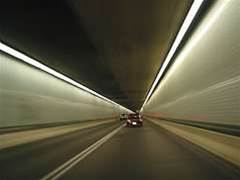Vodafone Hutchison Australia has revealed plans to launch its first commercial Long Term Evolution services "later this year", roughly in the same timeframe as Telstra.

The telco did not reveal precisely where it would launch commercial LTE services first.
However it said today that it was soon to start deploying Huawei equipment in a corridor around Newcastle that was capable of delivering LTE services.
VHA's trial of LTE in the 1800 MHz band had been conducted in "near Newcastle".
The telco said it that it had selected a "two-hour window in the early hours" of Tuesday next week to switch on the Huawei equipment at five base stations on the NSW Central Coast between Ourimbah and the coastal suburb of Toukley (which borders the southern part of Newcastle).
"The five sites will be the first of 44 base station sites that Vodafone will upgrade from Ourimbah, throughout Newcastle City and suburbs, and along a north-west corridor stretching to Springvale in the Hunter Valley," VHA said.
Work would pause over Easter but re-commence soon after with a view to completion by May 3.
"Vodafone will then spend the next six weeks drive-testing and tuning the network to optimise performance to deliver the best possible customer experience of the network," the telco said.
Customers that used the base stations to be upgraded with Huawei equipment would be notified of the work by text message.
"Our plan is to minimise disruption to customers in the area and absolutely maximise network performance in Newcastle, the Hunter and the Central Coast region before moving on to other regions of Australia," Vodafone CTO Michael Young said.
"The changes to our network equipment will happen overnight, but the actual improvements in network performance and experience will take a couple of months to be fully realised."
A VHA spokesman told iTnews the telco did not expect to run into any occupational health and safety issues when replacing equipment late at night.
"We adhere to all OH&S regulations and our engineers are well trained to conduct the equipment replacements during the evening hours to ensure we can minimise disruption to our customers," the spokesman said.
The Central Coast and Hunter regions were the first in Australia to get the new Huawei equipment, which VHA purchased in a deal signed in February.
VHA had been in the process of upgrading some of its most congested base stations over the past several months; however, these were capacity and performance upgrades and did not involve the swap-out of equipment.
Rival Telstra is upgrading parts of its own 3G network to LTE, with the first services expected before the end of the year.
Optus was yet to detail its LTE plans but, like the others, had been involved in a series of tests of the next-generation technology.
First load tests
VHA's news came after analyst firm Epitiro revealed overnight the first indications of how LTE networks performed under congestion greater than a handful of test devices.
To date, load testing of LTE networks has been limited by the number of end-user devices that telcos can get hold of.
In Australia, most tests have been conducted with a handful of devices, giving little indication of how LTE performs under pressure, albeit that the spectral efficiency of the technology is designed to ease the burdens on congested networks.
Epitiro's tests on TeliaSonera Finland's LTE network found average broadband download speeds of 36.1Mbps, uplinks of 1.7 Mbps and latency of 23ms.
There was plenty of fluctuation in the downlink speeds recorded, on several occasions dipping to between 5 Mbps and 10 Mbps. (See graph on page 10 of the report [pdf]).
And Epitiro conceded in the report that these tests occurred without the congestion one would expect on current 3G networks.
"Still in its infancy, the LTE subscriber base in Finland is limited, especially in comparison to subscribers on TeliaSonera's 3G network, meaning the 4G LTE service is not yet subject to contention from simultaneous peaks in demand, as the 3G network is," Epitiro said.
"Furthermore, the network's relatively small coverage area has meant in-motion testing is not yet possible and performance on trains or in cars is not yet understood."
TeliaSonera launched the network in November last year. It operated in the 2.6 GHz band.
Epitiro's tests were conducted at 30-minute intervals over a five-day period last month. The test scripts were configured to collect key performance indicators on web browsing, VoIP, video streaming, file downloads and online gaming.




_(22).jpg&h=140&w=231&c=1&s=0)
_(20).jpg&h=140&w=231&c=1&s=0)



_(26).jpg&w=100&c=1&s=0)

 iTnews Executive Retreat - Security Leaders Edition
iTnews Executive Retreat - Security Leaders Edition












_(1).jpg&h=140&w=231&c=1&s=0)



